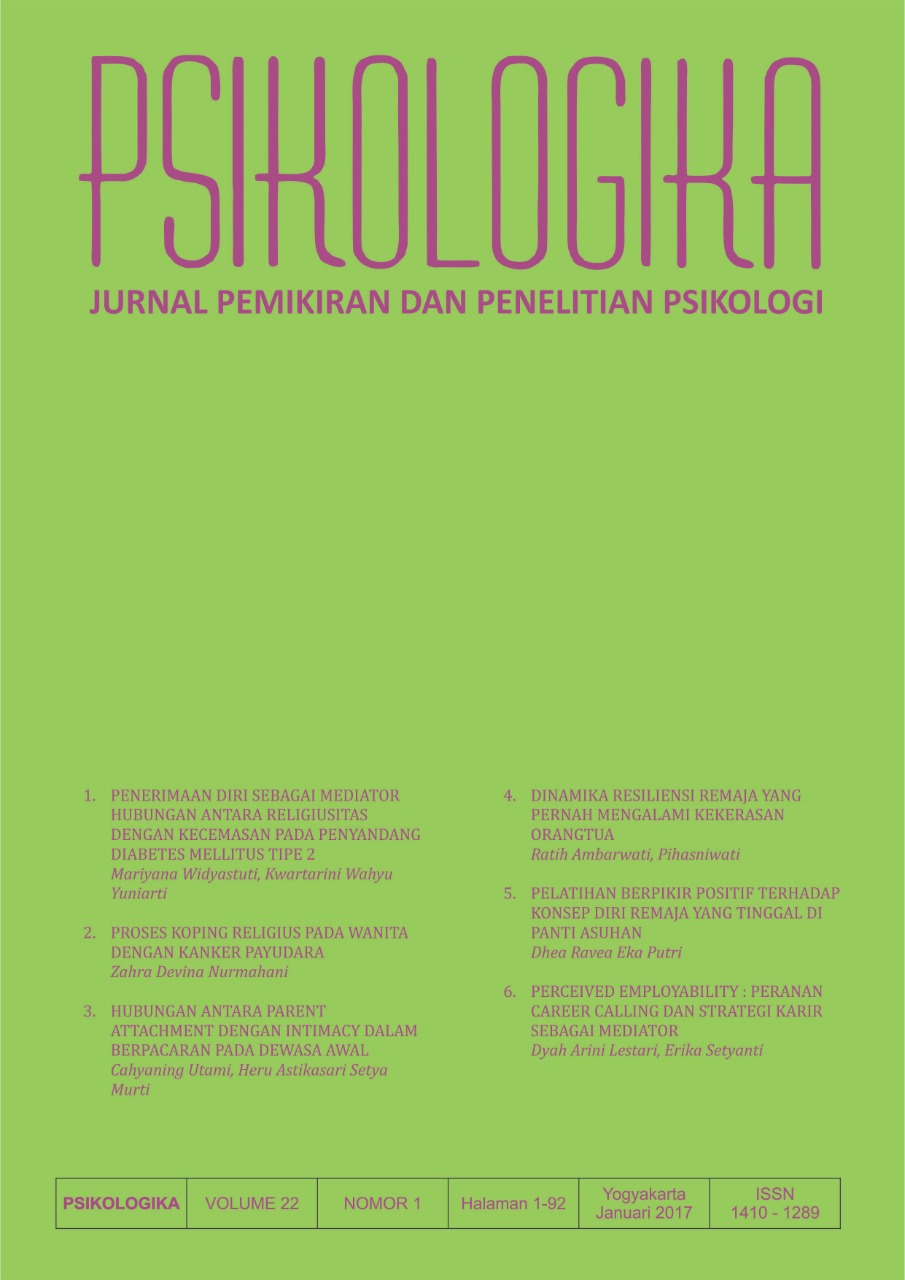Main Article Content
Abstract
Attachment is a lasting effective bond characterized by a tendency to seek and maintain the closeness of one individual to another, which can provide a sense of security, depending on the quality of the relationship. Based on the quality of the relationship, indivisuals will develop an internal working model that can lasts throughout a lifetime and will likely to affect the intimate relationships during adulthood. The aim of this research was to investigate the relationship between attachment and intimacy in young adults. One hundred and four subjects participated in this research, consisted in early adulthood between the age of 20 to 30 years old, who were in a relationship dating. The instruments of this research is Inventory of Parent and Peer Attachment (IPPA) scale and Personal Assessment of Intimacy in Relationship (PAIR) scale. The research shows a corelation beetwen parent attachment (mother) and intimacy r = 0,320 p = 0,001 (p<0,05) and corelation of parent attachment (father) with intimacy r = 0,256 p = 0,009 (p<0,05). The result shows a significant positive relationship between parent attachment and intimacy it means the
higher of the attachment then will also higher of intimacy in relatioonship.
Keywords: attachment, intimacy, young adulthood
higher of the attachment then will also higher of intimacy in relatioonship.
Keywords: attachment, intimacy, young adulthood
Article Details
License
Authors who publish with this journal agree to the following terms:
- Authors retain copyright and grant the journal right of first publication with the work simultaneously licensed under a Creative Commons Attribution-ShareAlike 4.0 International License that allows others to share the work with an acknowledgment of the work's authorship and initial publication in this journal.
- Authors are able to enter into separate, additional contractual arrangements for the non-exclusive distribution of the journal's published version of the work (e.g., post it to an institutional repository or publish it in a book), with an acknowledgment of its initial publication in this journal.
- Authors are permitted and encouraged to post their work online (e.g., in institutional repositories or on their website) prior to and during the submission process, as it can lead to productive exchanges, as well as earlier and greater citation of published work (See The Effect of Open Access).




